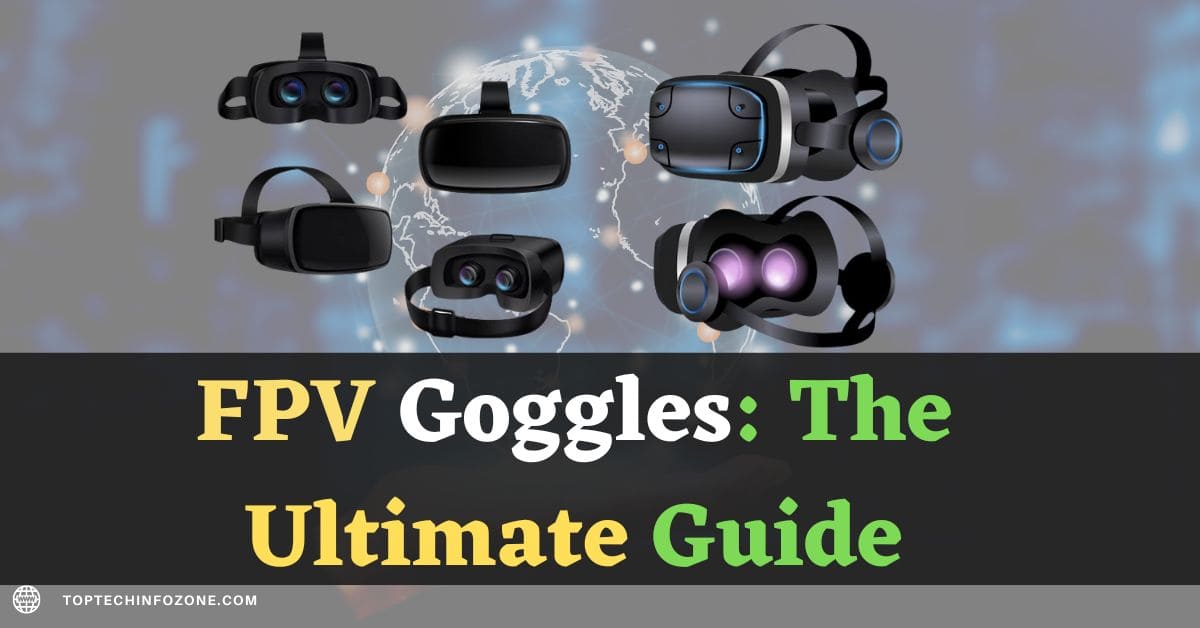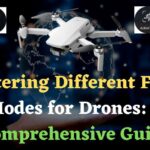FPV goggles are an essential tool for any drone pilot or enthusiast looking to enhance their flying experience. Whether you’re just starting out or you’re a seasoned pro, these goggles provide a first-person view of your drone’s flight, making it possible to see exactly where it is and what it’s seeing in real-time. With an immersive experience, improved safety, and increased fun, it’s no wonder that FPV goggles have become so popular in the drone community.
What are FPV Goggles?
FPV goggles are wearable devices that allow you to see what your drone sees while using FPV Drones.
They work by receiving a video feed from the camera on your drone and displaying it in real-time on the screens in front of your eyes.
This provides a true first-person view of your flight, allowing you to see everything from the drone’s perspective as if you were actually on board.
How Do FPV Goggles Work?
FPV goggles work by connecting to the video transmission system on your drone. This system sends a live video feed from the drone’s camera to the goggles, where it is displayed in real-time on the screens inside the goggles.
The video transmission system is typically made up of two main components: the video transmitter (VTx) and the video receiver (VRx).
The VTx is mounted on the drone and sends the video signal to the VRx, which is usually mounted on the goggles. The VRx then decodes the video signal and displays it on the screens in the goggles.
Most of the googles have a video input so that the use can connect it to a monitor or TV.
Types of FPV Goggles
There are two main types of FPV goggles: boxed goggles and modular goggles.
Boxed Goggles
Boxed goggles are the simplest and most convenient type of FPV goggles.
They come with everything you need to start flying, including a built-in video receiver, a display, and a battery. These goggles are typically more affordable and are a great option for beginner pilots.
Modular Goggles
Modular goggles offer more customization options, but they can be more complex and more expensive.
With modular goggles, you can choose different lenses, antennas, and other accessories to get the perfect fit and performance for your needs.
These goggles are a great option for more experienced pilots who want more control over their FPV setup.
Low Profile Goggles
Low profile goggles are a type of compact-style FPV goggles that have a sleek, streamlined design and a lower profile compared to traditional box-style goggles. They are typically more lightweight and portable, making them a good choice for those who prioritize mobility and ease of use.
Low profile goggles may sacrifice some features, such as a wider field of view or built-in head tracking, in order to maintain a smaller form factor. However, they still offer a high-quality viewing experience and are often more affordable than box-style goggles.
What to Look for When Choosing FPV Goggles
There are a variety of FPV goggles available on the market, each with its own set of features and benefits.
When choosing a pair of goggles, it’s important to consider a few key factors, such as display resolution, field of view, latency, interpupillary distance adjustment, compatibility, comfort, and price.
Let’s take a closer look at each of these factors to help you make the best decision for your needs.
Key Features to Look For in FPV Goggles:
Display Resolution
One of the most important factors to consider when choosing FPV goggles is the display resolution. The higher the resolution, the clearer and more detailed the image will be.
A resolution of 720p or higher is generally recommended for optimal viewing.
The resolution of 320×240 pixels costs the least and it keeps on increasing with the resolution.
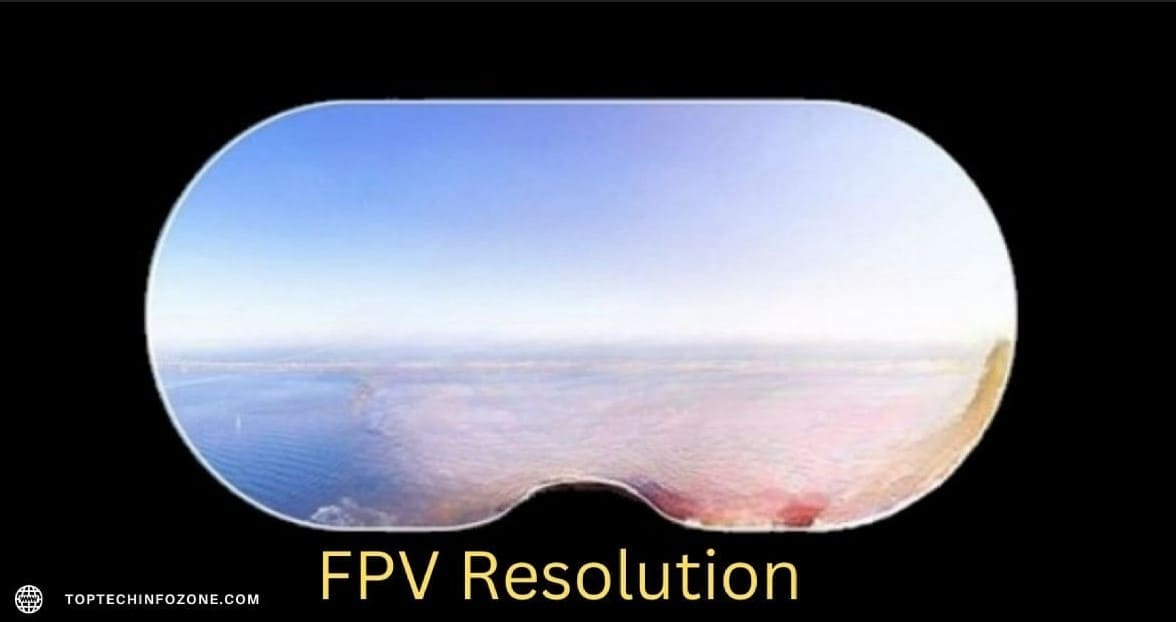
Field of View (FOV)
The field of view (FOV) of your FPV goggles is another important factor to consider.
The FOV refers to the amount of the environment you can see through the goggles.
A wider FOV will provide a more immersive experience, while a narrower FOV may lead to a more tunnel-like vision. When choosing FPV goggles, look for a FOV of around 40 degrees or higher.
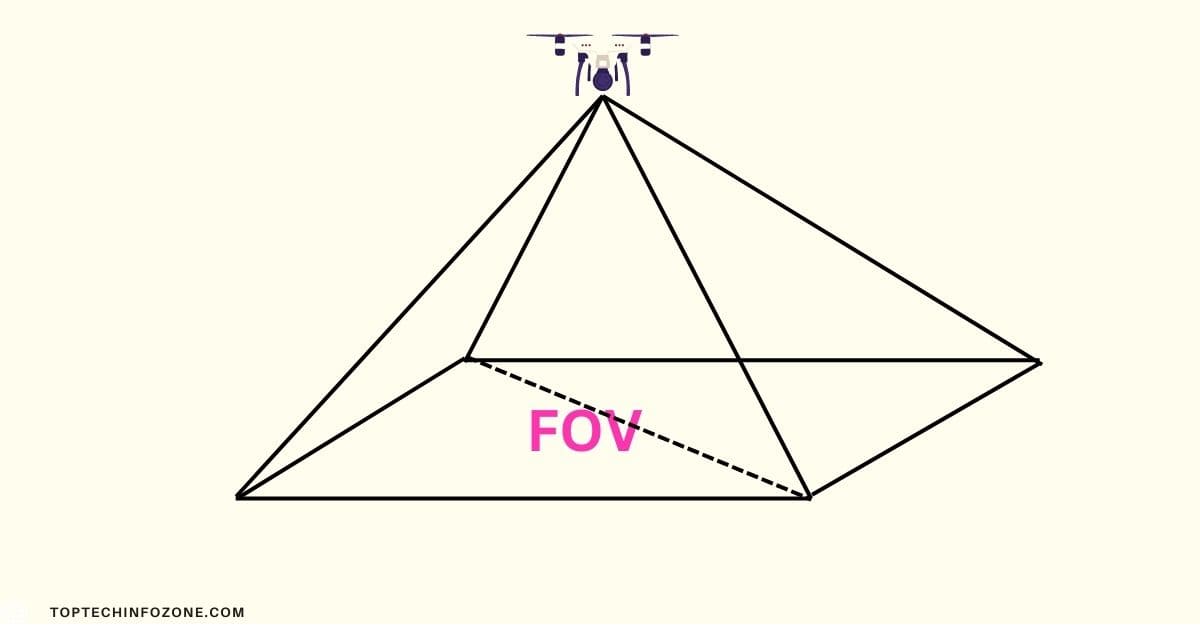
Latency
Latency refers to the time it takes for the image from your drone’s camera to be displayed on your FPV goggles.
A lower latency time means that the image will appear on your goggles more quickly and with less lag, making your flying experience smoother and more responsive.
Interpupillary Distance Adjustment (IDA)
Interpupillary distance (IPD) is the distance between your eyes, and it’s important to consider when choosing FPV goggles.
An adjustable IPD will ensure a comfortable fit, even if your IPD is different from the average. This is especially important if you plan on wearing your goggles for extended periods of time.
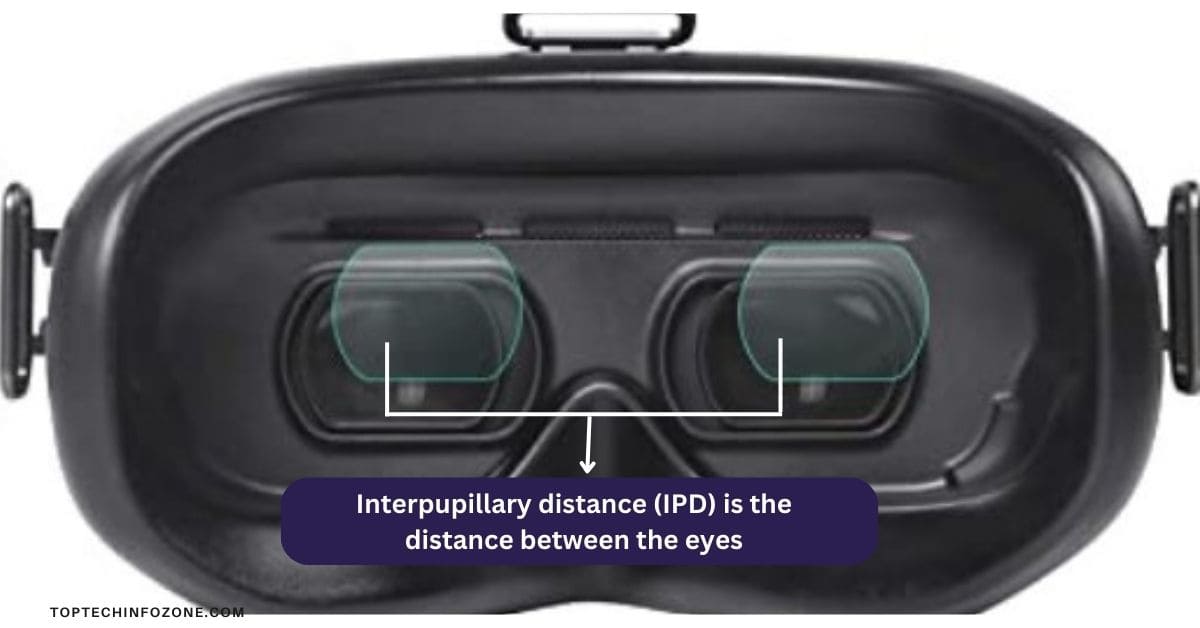
Compatibility
When choosing FPV goggles, it’s important to make sure they are compatible with your drone. Some goggles are designed specifically for certain models, while others are compatible with a wider range of drones. Be sure to check the compatibility of your goggles before purchasing.
Diversity
Diversity refers to a feature that allows the receiver in the FPV goggles to switch between multiple antennas to improve the quality and range of the video signal.
A diversity system typically consists of two or more antennas, each pointing in a slightly different direction, and a receiver that can switch between them based on the strength of the signal.
The advantage of diversity is that it helps to reduce signal dropout and improve range, especially in challenging environments where there may be obstacles or interference.
Aspect Ratio
Aspect ratio is an important consideration when choosing goggles or other video display equipment.
This is because different cameras and video systems may output video in different aspect ratios, and using the wrong aspect ratio can result in distorted or stretched images that are difficult to interpret accurately.
The most common aspect ratios used in FPV flying are 4:3 and 16:9.
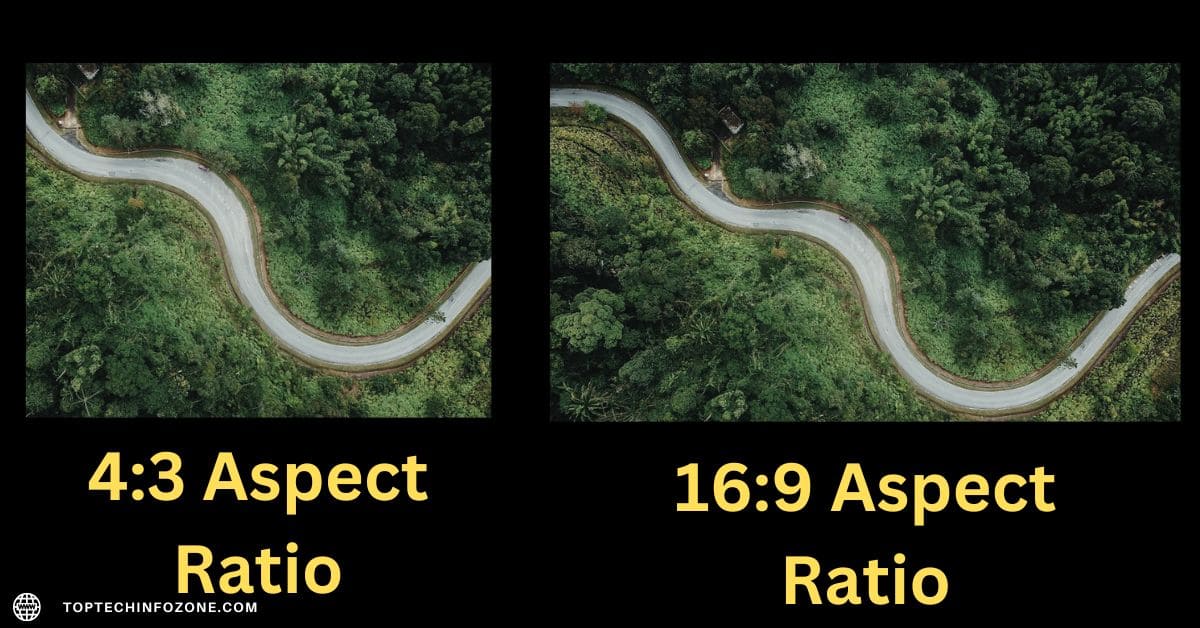
Video Receiver
Video receiver is an essential component that allows the pilot to receive the video feed from the drone and display it on their FPV goggles or monitor.
The video receiver is typically connected to an antenna, which captures the radio waves transmitted by the drone’s camera or video transmitter.
The choice of video receiver will depend on a number of factors, including the frequency band and channel being used by the drone, the range and quality of the video signal required, and the type of antenna being used.
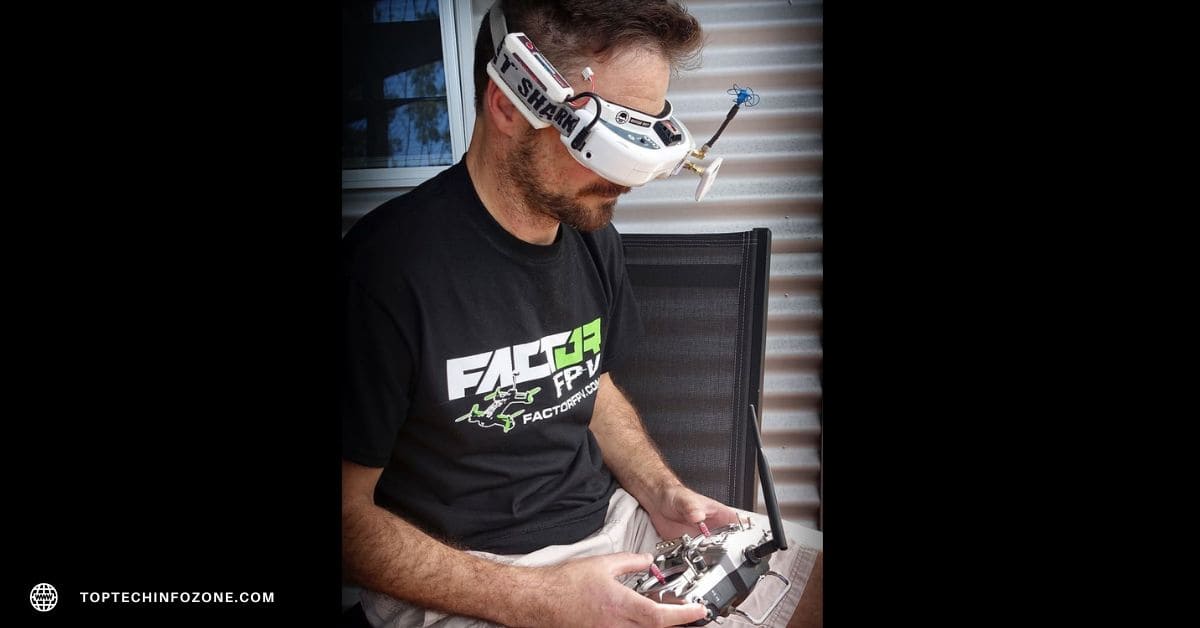
Comfort
Comfort is key when it comes to FPV goggles. Look for goggles that are lightweight and have a comfortable fit, as well as adjustable headstraps and face padding. This will ensure that you can wear your goggles for extended periods of time without discomfort.
Price
Finally, consider the price of your FPV goggles. Higher-end models will generally offer more features and better performance, but they may also come with a higher price tag. It’s important to find the right balance between features and price to ensure you’re getting the best value for your money.
Secondary aspects to consider:
HDMI input
HDMI (High-Definition Multimedia Interface) input is a feature found in some FPV (First Person View) goggles and monitors that allows users to connect external devices such as cameras, game consoles, or other sources of high-definition video.
DVR (Digital Video Recorder)
DVR (Digital Video Recorder) is a feature commonly found in FPV goggles that allows pilots to record the video feed from their drone onto an internal storage device, such as an SD card.
This can be a useful tool for reviewing and analysing footage, as well as for sharing videos with others.
Audio
Audio is an important aspect of FPV flying, as it can provide pilots with important auditory cues and feedback during flight.
Audio can be used to supplement visual feedback, allowing pilots to better understand the drone’s behaviour and make adjustments as needed.
In FPV goggles, audio can be transmitted through a built-in speaker or through headphones connected to the goggles.
Adjustable Aspect Ratio
Adjustable aspect ratio is a feature found in some FPV goggles and monitors that allows users to change the shape and size of the video display.
In traditional FPV video, the aspect ratio is typically 4:3, which is a more square-shaped frame. However, many modern cameras and video sources, particularly those used in professional or cinematic applications, use a wider aspect ratio of 16:9 or even 21:9.
Dioptre Lens Support
Dioptre lens support is a feature found in some FPV goggles that allows users to adjust the focus of the display to suit their individual vision needs.
This can be particularly important for pilots who have vision impairments or who wear corrective lenses, as it can help to ensure that the video feed is clear and in focus.
Faceplate Fan
A faceplate fan is a feature found in some FPV goggles that helps to regulate temperature and reduce fogging on the goggles’ lenses.
It is typically a small, battery-powered fan that is attached to the goggles faceplate and blows air across the lenses to prevent them from becoming foggy or obscured.
3D FPV Support
3D FPV support is a feature found in some FPV goggles that allows users to view stereoscopic 3D video content.
This can be particularly useful for pilots who want to achieve a more immersive flying experience or who are using cameras that can capture 3D video.
In a 3D FPV system, two separate video feeds are transmitted to the goggles, one for each eye. These feeds are typically slightly offset from each other to create the illusion of depth, similar to how our eyes naturally perceive the world around us.
To view 3D content in FPV goggles, users will typically need a camera or video source that is capable of capturing 3D video, as well as goggles that support 3D playback.
Anti-fog Fan
An anti-fog fan is a feature found in some FPV goggles that helps to prevent the lenses from becoming foggy or obscured during flight.
It is typically a small, battery-powered fan that is designed to circulate air across the lenses, reducing moisture and preventing fogging.
Fogging can be a common problem with FPV goggles, particularly during flights in humid or wet conditions.
The moisture in the air can condense on the lenses, making it difficult to see the video feed and potentially compromising safety during flight.
The anti-fog fan helps to mitigate this issue by circulating air across the lenses and reducing the build-up of moisture. This can help to ensure a clear and unobstructed view of the video feed, even in challenging weather conditions.
Head Tracking
Head tracking is a feature found in some FPV goggles that allows pilots to control the orientation of their camera or video feed by moving their head.
It typically involves using sensors or cameras in the goggles to track the movement of the pilot’s head, and then translating that movement into a corresponding adjustment of the camera or video feed.
Headset Colour
The colour of an FPV headset refers to the colour of the housing or frame of the goggles.
While the colour of the headset may not affect the performance of the goggles or the quality of the video feed, it can have several practical and aesthetic considerations.
From a practical perspective, the colour of the headset can impact its visibility and ease of use in different lighting conditions. For example, brightly coloured headsets may be easier to locate in dim or low-light conditions, while darker or more muted colours may be more comfortable to use in bright sunlight.
Video Receiver Module
A video receiver module is a component of an FPV goggles that receives and processes the video signal transmitted by a remote camera or drone.
It is typically a small circuit board that plugs into the headset or video monitor and includes an antenna, a tuner, and other electronic components that allow it to receive and decode the video signal.
Diversity Receiver
A diversity receiver is a type of video receiver module used in FPV goggles that uses multiple antennas and tuners to improve the quality and reliability of the video feed.
By using two or more antennas that are placed at different locations or orientations, the diversity receiver can select the strongest or clearest signal and switch between them as needed to reduce interference and improve range.
External Receiver Module Options
External receiver modules are devices that can be attached to a FPV goggles or monitor to provide additional features and functionality, such as diversity reception or extended range.
There are several different types of external receiver modules available (Diversity receiver module, Long-range receiver module, Multi-protocol receiver module) each with its own advantages and limitations.
External Receiver Via AV In
An external receiver can also be connected to a FPV goggles via an AV (audio/video) input.
This option is typically available on FPV monitors, which have a built-in screen for displaying the video feed.
By connecting an external receiver to the AV input, pilots can use a wider range of receivers and antennas to improve the signal quality, range, and reliability of the system.
When connecting an external receiver via AV in, it is important to ensure that the receiver is compatible with the monitor’s input format and resolution.
Dioptre Inserts
Dioptre inserts are lenses that can be added to a FPV goggles to correct vision problems and provide a clear, sharp image.
These inserts are typically designed to be interchangeable, so that pilots can choose the appropriate dioptre strength for their specific eyesight.
Frequencies and bandwidth
Frequencies and bandwidth are important considerations when it comes to FPV goggles as they can have a significant impact on the performance and reliability of the equipment.
FPV goggles typically operate in the radio frequency (RF) range, using frequencies in the GHz (gigahertz) range. Common frequency bands for FPV systems include 5.8 GHz, 2.4 GHz, and 1.2 GHz, although other frequency ranges may also be used.
The Benefits of FPV Goggles
FPV goggles offer a number of benefits over traditional flying methods, including:
- Immersive Experience: The first-person view provided by FPV goggles creates an immersive experience like no other, allowing you to truly feel as if you’re flying your drone.
- Improved Flight Experience: With FPV goggles, you can see exactly where your drone is at all times, making it easier to fly and navigate.
- Enhanced Safety: By providing a clear view of your drone’s location,
FPV goggles can help improve safety and reduce the risk of collisions. This is especially important when flying in populated areas or close to obstacles.
- Increased Fun: With a more immersive flying experience, FPV goggles can make flying your drone even more fun and exciting.
- Better Aerial Photography and Video: With a first-person view of your drone’s flight, you can capture better aerial photos and video. This is especially important for professionals and hobbyists who are looking to capture high-quality aerial footage.
- Improved Flying Skills: By providing a clear view of your drone’s flight, FPV goggles can help you develop and improve your flying skills. This is especially important for pilots who are looking to advance their skills and become more confident flyers.
- Increased Range: With FPV goggles, you can fly your drone much further than you would be able to without them. This is because you can see exactly where your drone is, even at a distance.
DJI FPV v2 Goggles
The DJI FPV Goggles are a pair of first-person view (FPV) goggles designed for use with DJI’s FPV drone system.
They feature high-definition screens and low-latency video transmission, allowing pilots to fly their drones from a first-person perspective with minimal lag.
The goggles also include a range of features, such as a built-in DVR for recording flights, adjustable screen brightness, and a head tracking function that allows the pilot to control the drone’s camera with their head movements.
For FPV goggles USA:
| Image | Product | Feature | Price |
|---|---|---|---|
|
TOP Pick
 |
DJI FPV Goggles V2 for Drone Racing Immersive Experience, Black
|
Immersive FPV Experience Dual-Screen Head Tracking Recording Compatibility | Buy Now |
For FPV goggles India:
| Image | Product | Feature | Price |
|---|---|---|---|
|
TOP Pick
 |
iFlight FPV Goggles with DVR Function 5.8G 40CH 4.3inch 800x 480 Diversity Video Headset
|
With DVR function video recording, picture saving High brightness 4.3 inch LCD specially turned for FPV racing or Model airplane. Built-in super sensitiveness 5.8GHz 40ch receiver, especially with RaceBand includes race frequency. Come with advanced auto-searching function ad show you the working frequency on screen. Built-in 3.7V/2000mAh battery, each full charge revive around 3.5 hours working time. Ergonomic design fit your faces. 92% transparent lens adopted, no distort, no blur on the adage of screen; Light weight 314.2g with 3hr 2000mAh battery, RTF for any scale, racing, Model airplane game. 4.3 inch 480*272px HD high brightness LCD. | Buy Now |
Conclusion
In conclusion, FPV goggles are a must-have for any drone pilot or enthusiast looking to enhance their flying experience. With a variety of options available, it’s important to consider factors such as display resolution, field of view, latency, interpupillary distance adjustment, compatibility, comfort, and price when choosing your goggles. With the benefits of an immersive experience, improved safety, and increased fun, FPV goggles are a great investment for anyone who loves flying drones.
Frequently Asked Questions (FAQs):
Self-flying drones are different from traditional drones in that they do not require a human operator. They are capable of operating on their own using a variety of sensors and technologies.
Self-flying drones offer several advantages, including efficiency, safety, and cost-effectiveness. They can operate 24/7, are safer than manned aircraft, and are more cost-effective to operate.
The challenges of using self-flying drones include regulations, privacy concerns, and technical issues. As with any new technology, it’s important to address these challenges to ensure safe and responsible use.
As technology continues to evolve, we can expect to see even more advanced self-flying drones in the future. These drones will be able to perform even more complex tasks and operate in a wider range of environments.
Related Posts:
- LiDAR Drones: Revolutionizing Remote Sensing and Data Collection (2023)
- The Revolutionary Selfly Drone: Changing the Game of Personal Photography (2023)
- Mastering Different Flight Modes for Drones: A Comprehensive Guide (2023)
- Revolutionizing Innovation: Self-Flying Drones Take Technology to New Heights (2023)
